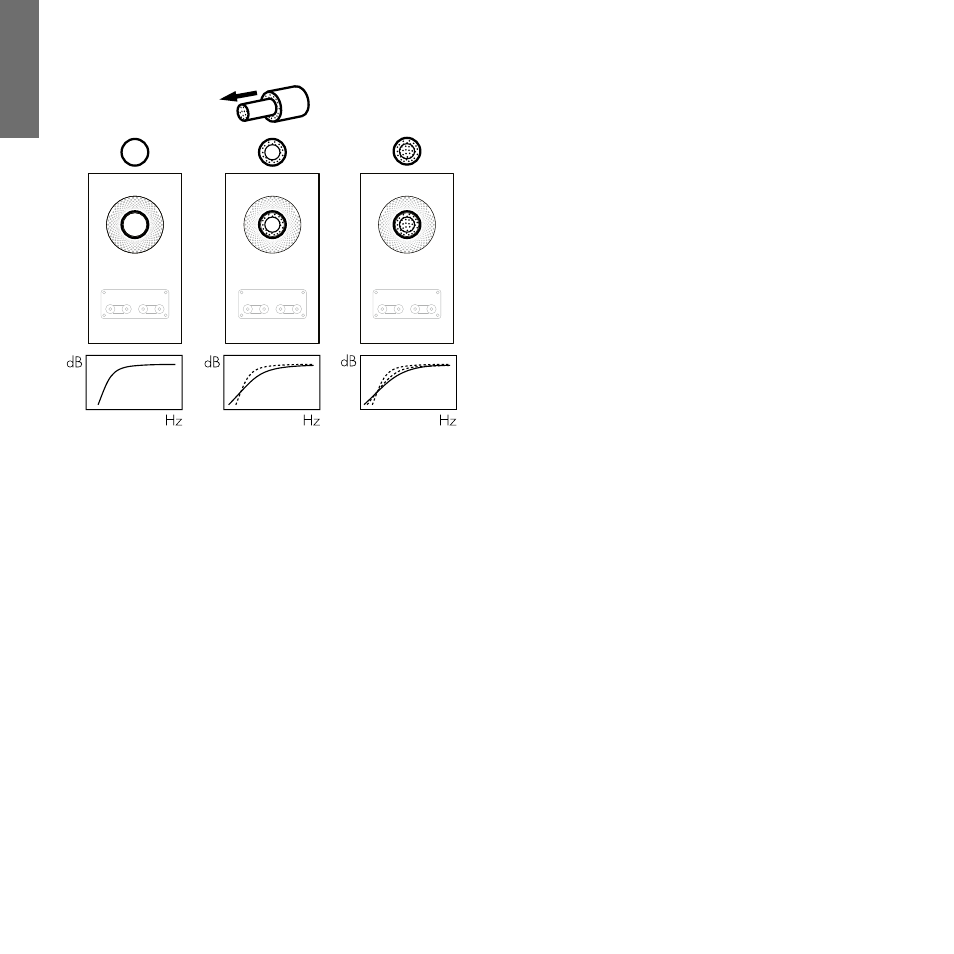Bowers & Wilkins 707 S3 2-Way Bookshelf Speakers (Gloss Black, Pair) User Manual
Page 9

9
ENGLISH
If no alternatives exist, you can adjust your loudspeakers’ low-
frequency performance using the supplied foam plugs. The plugs
are a two-piece part, allowing for a degree of fine-tuning using
either the outer, larger-diameter piece in isolation or the two parts
together. Using solely the outer, larger-diameter foam piece will
deliver less bass attenuation than the complete plug assembly.
If the central image lacks focus, try moving the speakers closer
together or angle them inward so that they point at a location
just in front of the listening position. If the sound is too bright,
increasing the amount of soft furnishing in the room (heavier
curtains for example) may help balance the sound. Conversely,
reducing the amount of soft furnishing may help brighten a dull
sound.
For the most discerning listening, remove the grilles by gripping
around their edges and gently pulling them away from the
cabinet.
Before fine-tuning, make sure that all the connections in the
installation are correct and secure.
Moving the speakers further from the walls will generally reduce
the volume of bass. Space behind the speakers will also help
to create an aural impression of depth. Conversely, moving the
speakers closer to the walls will increase the volume of bass.
If you want to reduce the volume of bass without moving the
speakers further from the wall, fit the foam plugs or, for less
severe bass reduction, the foam rings in the port tubes (above).
If the bass seems uneven with frequency this will most probably
be due to resonance modes in the listening room. Even small
changes in the position of the speakers or the listening position
can have a profound effect on how these resonances affect the
sound. Try moving the listening position or locating the speakers
along a different wall. The presence and position of large pieces
of furniture can also influence resonance modes.
4. Fine-Tuning